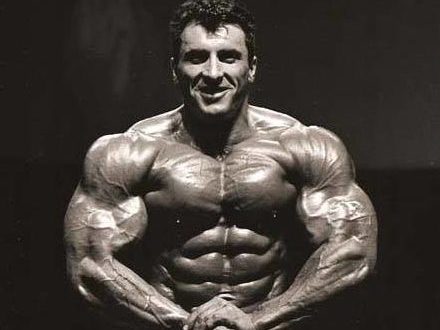If training & coaching has taught me anything, it’s that people are incredibly adept at taking a great idea and screwing it up.
Sometimes it’s because they ignore context.
“Big weights builds big muscles, so every exercise should be trained heavy.”
Yeah, that dog don’t hunt. Your chiropractor will love you though.
Other times it’s too much of a good thing.
“Drop sets, rest pause sets, eccentric-only sets are all effective. Lets do them all in the same program and get 3 times the results.”
Easy tiger. All that dog will do is roll over and bite you.
Another big screw up is poorly-designed giant sets.
Giant sets, which are multiple exercises linked together with SOME rest between each lift, could be my favorite programming trick, especially in specific contexts.
– Addressing aesthetic weak points
– Burning more calories per session
– Improving conditioning (great for fighting/grappling athletes or Black Friday shoppers).
– As part of a twice-a day training routine (what I’m currently doing and loving).
So where do folks screw it up?
– Too much rest between drills (reduces metabolic demand)
– Not enough rest between drills (reduces the load that can be used)
– Poor exercise choices (basic exercises are still best)
– Poor exercise sequencing (pairing antagonist lifts when possible, keeping it practical in a gym setting)
– Way too heavy (not enough time under tension)
– Not heavy enough (light weights can still work but doing 30-rep sets within a giant set is some kinda awful).
– No workout to workout progression model.
Here’s what I did this morning for back, inspired by spending a day with Milos Sarcev, a legendary Serbian bodybuilder who also happens to be one hell of a coach and staunch advocate of ball-busting giant sets.
A) Neutral grip pull-up x fail
B) Meadows rows x 8-12/ side
C) Pec/lat focus DB pullover x 12-15
D) Chest supported row x 8-12
E) Seated row of some kind x 12-15
F) Triceps focused DB Pullover x 12-15
G) Rope Triceps pressdown x 20
Some Notes:
– Exercises are NOT performed with zero rest in between. You want a short (around 15s) rest after each drill — enough time to stroll to the next lift (or strut or sashay, whatever). Just these few seconds can restore energy reserves enough to dramatically increase performance on subsequent lifts.
– The pullovers in the example shown are inserted both as an antagonist “active rest” exercises and to address specific weak points (on this client, pecs and triceps). Slight changes in technique affect whether the DB pullover hits the pecs/lats versus the triceps. However, you could even just do push-ups.
– After the sequence is done, rest a full 3 minutes and repeat two, three, or four times or until rep performance goes to shit. That’s where you need to keep a log and focusing on progression.
I went through this three times and was done in half an hour (pump city!), but can easily train again in a few hours, either the same body part, or the opposing one, which would be chest.
Good times.
Do note: this isn’t Milos’s actual workout, just an inspiration.

